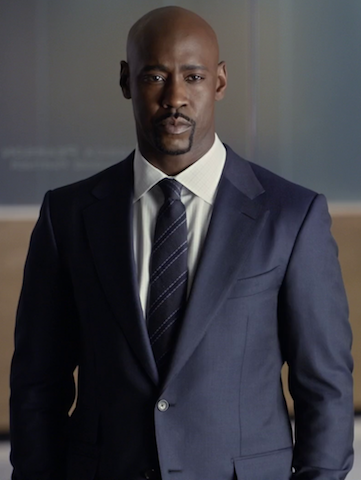
We hear it all the time: “Look your best.” It’s easy to follow on special occasions like a job interview or wedding, but what about the non-special times like a regular trip to the grocery store? I’ll be the first to admit that looking your best isn’t always the easiest task and takes mental effort. Steve Jobs and Marc Zuckerberg are perfect examples of men who see little value in dressing well. At the height of his career, Jobs chose to wear the same black sweater and blue jeans wherever he went while Zuckerberg can be (in the past) spotted sporting a dark jeans and grey t-shirt on most occasions. These are accomplished men so perhaps they’re on to something? In fact, isn’t it vain to care about how you look? It’s what’s on the inside that counts right? Take note of your answers now and let’s revisit them at the end of the article.
Why I Started Caring About My Looks

In middle school I realized that the popular kids dressed “cool,” and since I obviously wanted to be popular, dressing “cool” became a priority for me. Don’t judge! I outgrew the pursuit for popularity but the desire to dress well remained. Why? I could either be intentional or apathetic about my appearance — the former made me feel better about myself, aka, cool, while the latter offered nothing in return. I stayed intentional about the way I dressed throughout college but there was one problem. My dressing philosophy revolved around trying to look cool. What does looking cool even mean? It wasn’t until I graduated college and moved to a new city did I realize that my philosophy was inadequate.
Location, Location, Location
I moved to Washington, DC after graduating college and started to see patterns in how people dressed, their behavior, and the type of events and locations they frequented. This motivated me to analyze my wardrobe and led me to see that most of my “cool” clothes would not be perceived as cool in the scenes and groups of people I wanted to play in. This was humbling since I had always assumed that I knew how to dress well. I faced the reality that my style philosophy and understanding of appearance needed to be corrected and received help from an image consultant named Tanner Guzy. Tanner is the author of The Appearance of Power and sheds light on how our appearances can influence the psychology of yourself and the psychology of others. With Tanner, I gained clarity on my unique style and what influences the styles of others. The rest of this article distills the key takeaways from the book and will help shift your views to start seeing your appearance/style as a valuable asset.
You Can’t Always Control Your Mind


Do you draw the same conclusions about these two men? Take a step back. Do you realize that you just drew conclusions about two men you don’t know? It wasn’t intentional or entirely conscious, but your brain couldn’t help itself. What did your brain use to make those conclusions? Their appearances! How they were dressed, their grooming, etc. The conclusions/assumptions your brain reached may be wildly inaccurate, but if you were to meet and interact with those men in real life, those conclusions/assumptions could influence your interaction. For example, you may consider greeting the guy in the suit with a formal handshake. The difference between the two is that the guy in the denim jacket gives off a much more casual and fun vibe. Am I wrong?
Your Appearance Communicates Below the Conscious
Did those conclusions/assumptions come out of thin air? To make navigating the world easier humans tend to partake in a phenomenon called associative learning. For example, when you think about a suit what comes to your mind? Now think about a bathing suit? Each piece of clothing produced different thoughts/images in you without conscious effort. We can undertand why all this matters home by reflecting on the principles of writing.
All English writing is made up of words, right? The writer’s ability to convey his/her message is based on his/her’s choice of words because poor word choice can weaken an otherwise strong message. As long as you know the definitions of the words you’re reading, reading is essentially an auto-pilot activity, which is why you can naturally make sense of this article. Remember when I asked you to reflect on what a suit and bathing suit means to you? Just like reading, your brain automatically made sense of what I asked and what those two pieces of clothing meant to you. This is a key observation to recognize. The same background processes your brain undergoes to make sense of words are the same background processes that take place when seeing the appearance of others. Therefore, clothing and how you dress can be seen as a language our brains can interpret and understand. A language that conveys a message/story whether you are trying to tell one or not. There are individuals who are intentional about the type of story they want to tell. In other words, they know humans create and have relationships between visual stimuli and certain thoughts due to Associative learning. These individuals know what they want to be associated with and craft their appearance to line up with those associations. This would explain why some sports fan love wearing their team’s jersey. They want to communicate — through their clothes — to the world that they belong to the XYZ team.
Understanding that style is a language helps us understand why the conclusions about the two men in the picture differed. Their clothing told two different stories and your brain interpreted them for you!
Are you telling the right story?
If you had the job interview of your dreams tomorrow, are you going to follow their dress code or put on whatever you want? If you genuinely want the job, you‘re probably going to minimize your chances of an automatic rejection and follow their dress code. Why? Disobeying the dress code could communicate that you don’t care about following their directions. That’s a story an employee probably doesn’t want to tell. If you agree with that, I think you’re aware that your appearance is of value:
Our clothes, grooming, posture, and other visual cues are tools to help us get what we want. We have the choice of whether or not those tools play in our favor or hurt us. — Appearance of Power
If style is a language, you can utilize it to your advantage by being intentional about how you dress. This is not to say that who you are doesn’t take precedence over your style, but the reality is that people will read the visual cues from your appearance before meeting or speaking with you. Some people will hold back making pre-conceived notions about you while others won’t.
If you wish,you can align your style with who you are or how you would like to be perceived. Let’s say you enjoyed wearing your favorite team’s jersey whenever they have a game or match. You probably wouldn’t ever want to wear your opponent’s team jersey, right? Why not? That’d be sending the wrong message internally and externally.
Appearance matters but at the same time, it doesn’t
Steve jobs and other celebrities like Kanye West demonstrate this. These individuals dress in their own unique way and likely do so without considering how other people perceive them. This perhaps, is the end goal. To be who you are without caring what people think (assuming you won’t be harming others). Steve Job’s reputation plus his simplistic way of dressing communicated that he prioritized producing products of value over most things. Kanye West’s way of dressing communicates that he does what he wants to do and doesn’t care what others think about him. Both individuals are being who they are and are communicating that with how they dress.
That’s the end goal. To reflect who you are with how you dress.
Cheers,


